Common Box Turtles
- April 2, 2024
- 0 comment
Common box turtles are fascinating reptiles that inhabit various ecosystems across North America. Renowned for their distinctive domed shells and unique coloration, these turtles are a common sight in woodlands, grasslands, and marshes. Their adaptability to diverse habitats allows them to thrive in environments ranging from dense forests to open meadows. Common box turtles are primarily diurnal creatures, meaning they are most active during the day, when they forage for food and engage in other activities. Their omnivorous diets consist of a wide array of plant matter, insects, fruits, and small vertebrates, showcasing their role as opportunistic feeders within their ecosystems.

Despite their terrestrial nature, box turtles are also proficient swimmers and may occasionally venture into water bodies to forage or escape predators. With their importance in maintaining ecological balance and their captivating appearance, common box turtles continue to capture the imagination of nature enthusiasts and researchers worldwide.
| Specification | Details |
|---|---|
| Scientific Name | Terrapene carolina |
| Family | Emydidae |
| Shell Length | 4 to 6 inches (10 to 15 centimeters) |
| Weight | 0.5 to 1.5 pounds (225 to 680 grams) |
| Lifespan | 30 to 50 years (in captivity) |
| Habitat | Woodlands, grasslands, marshes |
| Diet | Omnivorous, including plants, insects, fruits, small vertebrates |
| Activity | Diurnal (active during the day) |
| Reproduction | Sexual maturity reached at 5 to 10 years old; mating season in spring |
| Threats | Habitat loss, pollution, illegal collection for pet trade |
| Conservation Status | Varies by species; some are threatened or endangered |
| Legal Protection | Protected by various laws and regulations |
Common Box Turtles: A Closer Look at These Fascinating Reptiles

Box turtles are fascinating creatures that have captivated the interest of nature enthusiasts and researchers alike. Their unique characteristics and behaviors make them a subject of curiosity and admiration. In this article, we’ll delve into the world of common box turtles, exploring their physical attributes, habitat, behavior, and conservation status.
Physical Characteristics

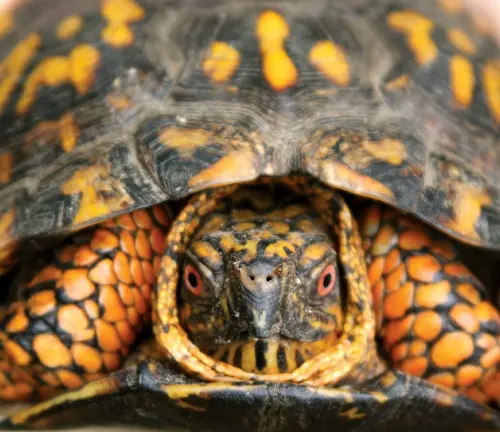
The physical characteristics of common box turtles are distinctive and contribute to their unique appearance. These reptiles are known for their domed shells, which provide essential protection from predators and environmental hazards. The shells vary in coloration and pattern, with some individuals exhibiting vibrant hues of yellow, orange, or brown, adorned with intricate markings. Additionally, box turtles have sturdy limbs and well-defined heads. Their limbs are equipped with sharp claws, which aid in digging, climbing, and grasping objects.
The heads of box turtles are relatively small compared to their bodies, with beak-like mouths adapted for feeding on a variety of foods. Their eyes are positioned on the sides of their heads, providing them with a wide field of vision to detect potential threats or prey. Overall, the physical characteristics of common box turtles reflect their adaptation to diverse habitats and their role as resilient survivors in the natural world.
Habitat and Distribution


The habitat and distribution of common box turtles are diverse and encompass various ecosystems across North America. These turtles are commonly found in wooded areas, grasslands, and marshes, preferring habitats with ample vegetation and access to water sources. They thrive in environments that offer a mix of open spaces for basking and foraging, as well as dense vegetation for shelter and protection. Common box turtles are native to regions of North America, including the eastern and central United States, from Maine to Florida and west to Michigan, Texas, and parts of Mexico. They inhabit a range of geographical landscapes, from forests and meadows to wetlands and coastal areas.
Despite their adaptability, common box turtles face habitat fragmentation and loss due to urbanization, agriculture, and other human activities, which can impact their distribution and survival. Understanding their habitat preferences and the factors affecting their ecosystems is crucial for conservation efforts aimed at protecting these remarkable reptiles.
Behavior and Diet

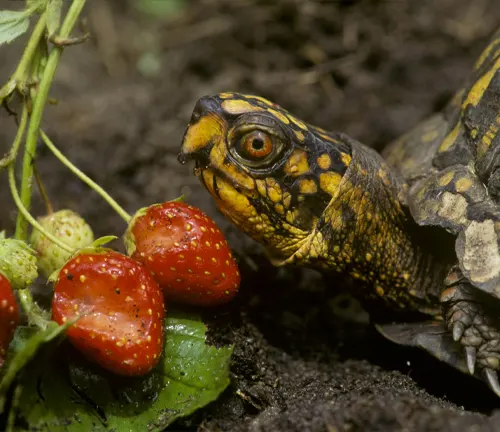
Behavior and diet are essential aspects of the life of common box turtles, offering insights into their natural history and ecological roles.
Box turtles are primarily diurnal, meaning they are most active during the day. They engage in a variety of behaviors, including foraging for food, basking in the sun to regulate their body temperature, and seeking shelter from predators or inclement weather.
Their omnivorous diet is diverse, consisting of a wide range of plant matter, insects, fruits, and small vertebrates. This opportunistic feeding behavior allows box turtles to adapt to changing environmental conditions and food availability. They use their keen sense of smell and vision to locate prey items and suitable food sources within their habitats.
Box turtles play an important role in their ecosystems as both consumers and prey items for other animals. Their feeding habits contribute to seed dispersal and nutrient cycling, while their presence in food webs influences the population dynamics of various organisms.
Life Cycle and Reproduction


The life cycle and reproduction of common box turtles are fascinating aspects of their biology, shedding light on their reproductive strategies and population dynamics.
Box turtles typically reach sexual maturity at around 5 to 10 years of age, although this can vary depending on factors such as environmental conditions and individual health. During the breeding season, which usually occurs in the spring and early summer, male box turtles display territorial behaviors and engage in courtship displays to attract females. These displays may involve head bobbing, circling, and vocalizations to communicate their readiness to mate.
Once mating occurs, female box turtles seek out suitable nesting sites to lay their eggs. They prefer well-drained soil with adequate moisture and sunlight, such as forest edges or open meadows. After digging a shallow nest, usually around 4 to 6 inches deep, the female deposits a clutch of eggs, typically ranging from 1 to 9 eggs, depending on factors such as age and size.
The incubation period for box turtle eggs varies depending on environmental conditions, such as temperature and humidity. It typically ranges from 60 to 90 days, with warmer temperatures resulting in shorter incubation times. Once the eggs hatch, the hatchlings emerge from the nest and must fend for themselves, facing various challenges such as predation and environmental hazards.
Survival rates for box turtle hatchlings are relatively low, with only a small percentage reaching adulthood. Those that do survive undergo a period of growth and development, gradually maturing into reproductive adults and continuing the cycle of life.
Conservation Status
Despite their resilience, common box turtles face numerous threats, including habitat loss, pollution, and illegal collection for the pet trade. Conservation efforts aim to protect these turtles and their habitats through habitat restoration, captive breeding programs, and public education initiatives.
Interactions with Humans
While box turtles are often kept as pets, it’s essential to consider their specific needs and the legal implications of ownership. Additionally, laws and regulations govern the collection and transportation of box turtles to ensure their welfare and conservation.
Tips for Encountering Box Turtles
If you encounter a box turtle in the wild, it’s essential to observe from a distance and avoid disturbing its natural behavior. If you suspect a turtle is injured or sick, contact local wildlife authorities or rehabilitation centers for assistance.
Different Species
Eastern Box Turtle
(Terrapene carolina carolina)
Found primarily in the eastern United States, including regions from Maine to Florida and west to Michigan and Texas. Known for its colorful shell markings and distinct dome-shaped carapace.

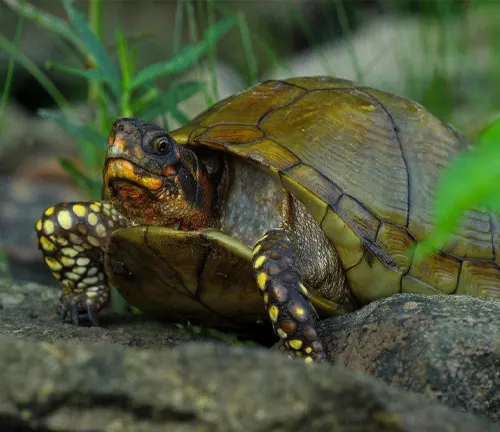
Three-Toed Box Turtle
(Terrapene carolina triunguis)
Native to the southern United States, including parts of Texas, Oklahoma, and Arkansas. Recognized by its three toes on the hind limbs, compared to the four toes of other box turtle species.
Gulf Coast Box Turtle
(Terrapene carolina major)
Inhabits coastal regions of the southeastern United States, including Alabama, Mississippi, and Louisiana. Distinguished by its larger size and robust appearance compared to other box turtle species.


Florida Box Turtle
(Terrapene carolina bauri)
Endemic to the state of Florida, this species is characterized by its dark-colored shell and distinct yellow markings on the head and limbs.
Mexican Box Turtle
(Terrapene mexicana)
Found in various regions of Mexico, including desert areas and tropical forests. Exhibits similar characteristics to other box turtle species but with adaptations to its specific habitat.

Frequently Asked Question (FAQs)
- What do box turtles eat?
Understanding the dietary preferences of box turtles is essential for their care. They have omnivorous diets, consuming a variety of plant matter, insects, fruits, and small vertebrates. - How do you care for a box turtle?
Many individuals seek guidance on the proper care and husbandry of box turtles, including habitat requirements, diet, and healthcare. - Where do box turtles live?
People often inquire about the natural habitats of box turtles, including the types of environments they inhabit and their geographical distribution. - How can you tell the age of a box turtle?
Determining the age of a box turtle can be challenging, but certain characteristics, such as shell growth rings and size, can provide clues to their approximate age. - Can box turtles be kept together?
Individuals considering keeping multiple box turtles often ask about their compatibility and whether they can be housed together in the same enclosure. - Do box turtles need UVB lighting?
UVB lighting is essential for the health and well-being of box turtles, as it helps them metabolize calcium and vitamin D3, crucial for shell and bone health. - How often should I feed my box turtle?
Maintaining a proper feeding schedule is crucial for the health of box turtles. Owners often ask about the frequency and quantity of food to provide. - Do box turtles need water?
Ensuring access to clean water is vital for box turtles, as they require hydration and may also use water for soaking and bathing. - Are box turtles territorial?
Understanding the territorial behaviors of box turtles is important for their care, especially when housing multiple individuals together. - How do box turtles reproduce?
Individuals interested in breeding box turtles often inquire about their mating behaviors, nesting habits, and the incubation process for their eggs. - Do box turtles carry diseases?
Concerns about disease transmission from box turtles to humans or other pets prompt questions about common health issues and preventive measures. - Can you release a pet box turtle into the wild?
Many people wonder about the ethical and practical considerations of releasing captive box turtles back into their natural habitats.




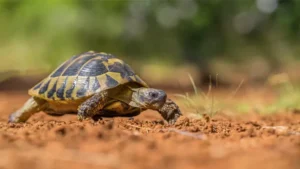




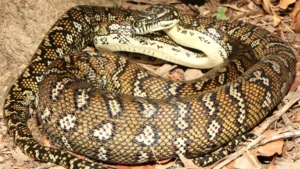




Leave your comment